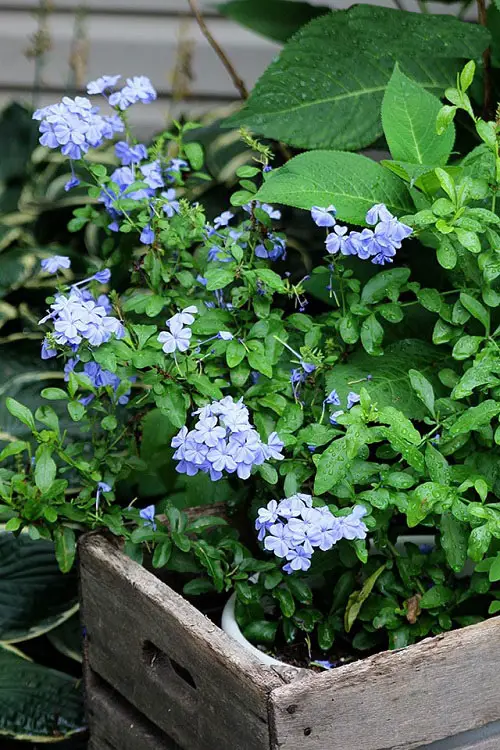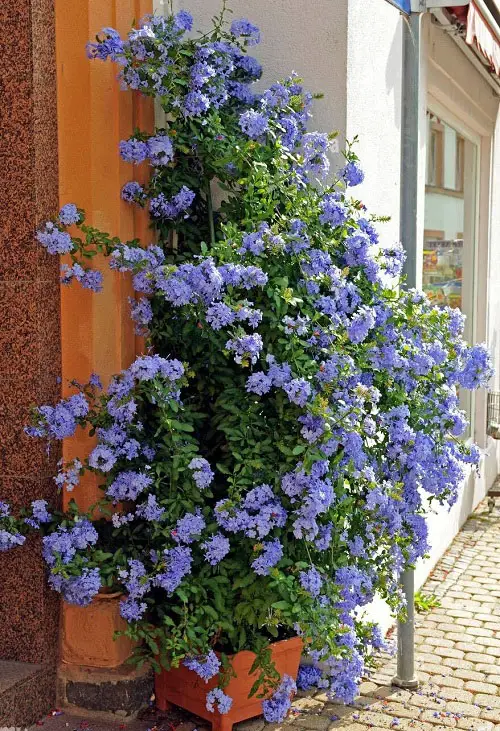Learn How to Grow Plumbago in your home and garden and invite a refreshing appeal of its beautiful flowers!
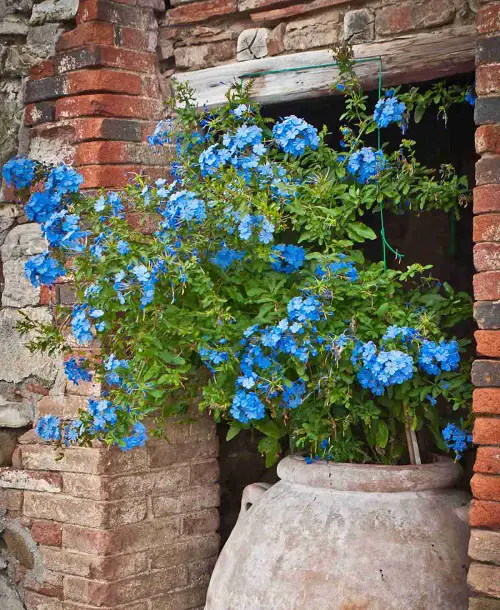
This article will give you in-depth details on How to Grow Plumbago and information about its care to ensure you get the best flowers!
Look at the Flowers to Plant with Herbs
Plumbago Information
Plumbago is a genus of flowering plants in the family Plumbaginaceae. The genus consists of about 20 species of shrubs, herbaceous perennials, and annuals, native to tropical and subtropical regions of the Americas, Africa, and Asia.
Common species include Plumbago auriculata, commonly known as Cape or Sky-blue Plumbago, which is native to South Africa. The name of the genus comes from the Latin word for lead, plumbum, referring to the lead-like color of the flowers.
It features flowers that are typically blue, white, or pink and appear in clusters along the stems. The foliage is typically green, with some species having silver or grey variegation.
USDA Zones: 5-9
Best Pot Size for Growing Plumbago Flowers
You can start the plant in a 10-12 inch pot, which will be good for 2-3 years. After that, depending on the growth and spread, re-pot it into one size bigger container than the old one.
Best Varieties of Plumbago Flowers 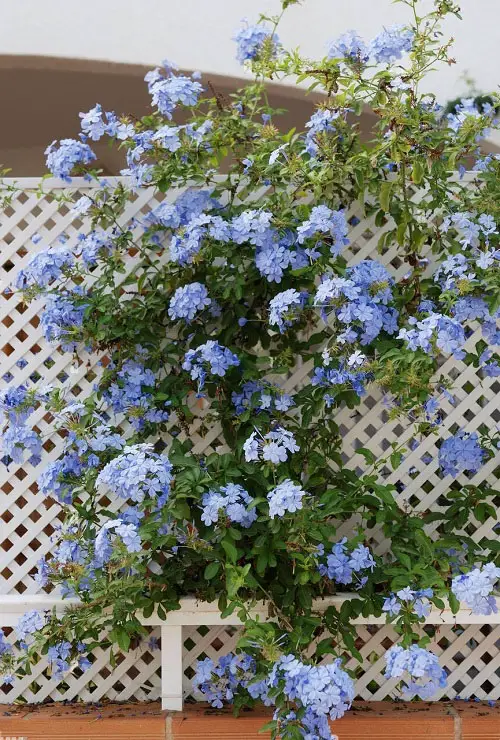
- Plumbago auriculata: It has bright blue flowers that bloom continuously throughout the summer. It grows well in hot, humid climates and is a great choice for container gardens.
- Plumbago capensis: This plant produces fragrant white flowers. It grows in full sun and blooms from spring to fall.
- Plumbago zeylanica: This variety has bright blue flowers and is drought-tolerant. It grows up to five feet tall and blooms from spring to fall.
- Plumbago larpentiae: This plant produces pale blue flowers and is a great choice for areas with strong winds. It blooms from spring to fall.
- Plumbago grandiflora: This variety has large, white flowers that are very fragrant. It grows in full sun and blooms from late spring to early fall.
How to Grow Plumbago?
By Stem Cuttings:
Cut a 5-6 inches long stem from a healthy plumbago plant with a pair of clean, sharp scissors. Prepare a potting mix for your cuttings. A good mix for plumbago cuttings is one part perlite to one part peat moss. Remove the lower leaves from the stem and dip the cut end into a rooting hormone. Plant the stem cuttings and water the potting mix. Place the pot in a warm, bright location with indirect sunlight. Keep the soil moist and cover the pot with a plastic bag to create a humid environment.
After a few weeks, you should see new growth on the stem.
Requirements for Growing Plumbago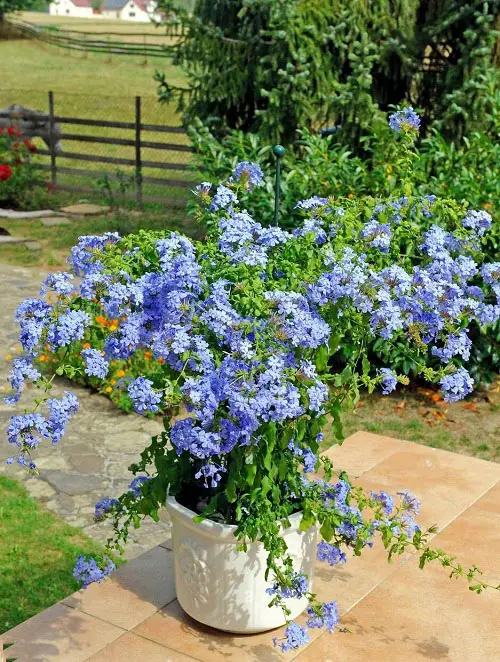
Location
Plumbago flowers grow best in full sun, so plant them in an area that receives at least 6-8 hours of direct sunlight daily. You can also grow it in a shaded location, but it won’t bloom as much.
Soil
Use a soil-based potting mix that contains compost and/or well-rotted manure. Ensure that the potting mix is light and well-draining and contains some sand and perlite to improve drainage.
Water
Water the plant regularly to keep the soil moist but not soggy. Always water the plants when the top inch of soil feels dry. Ensure your Plumbago flowers receive at least an inch of water per week and more during hot, dry periods.
Temperature and Humidity
Plumbago favors a temperature between 65 and 86 degrees Fahrenheit (18 to 30 degrees Celsius). Humidity levels should also be kept between 30 and 40% to ensure the flowers thrive.
Check out Flowers That Look Like Bluebonnets
Plumbago Care
Fertilizer
Apply a balanced liquid fertilizer in a ratio of 10-10-10, diluted to half strength once in every 3-4 weeks. Do not feed the plant in winter.
Pruning and Deadheading
Prune the plant in late winter or early spring. Cut back any dead or damaged branches and stems. Also, remove branches that are crossing each other.
Most importantly, cut the tips of the stems to promote bushier growth.
Pests and Diseases
Plumbago flowers are generally quite hardy and resistant to pests and diseases. However, they can be susceptible to some pests, such as spider mites, thrips, and aphids, which can be an issue and can be controlled with insecticidal soap or other insecticides.
To prevent the spread of pests and diseases, it is important to keep the area around the plant free of debris and weeds.


